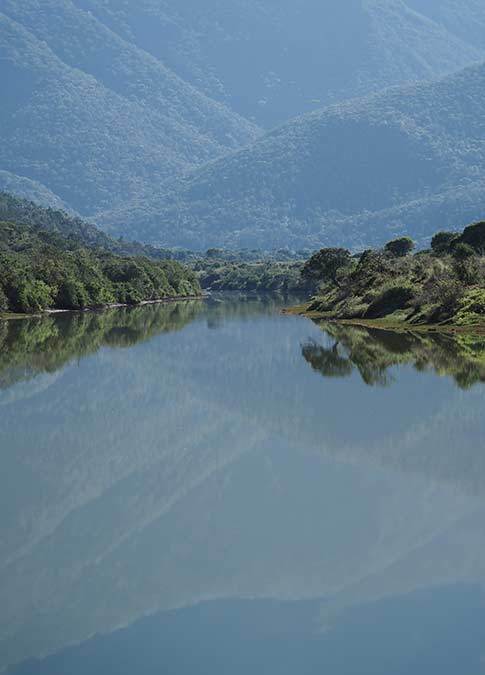9 Facts about Ostriches
Ostriches are probably one of the strangest birds in the African wilderness. They have long necks and legs, large feathers and bodies and they can't fly. They are often spotted on the open plains at Kariega Game Reserve.
Nine Interesting Facts about Ostriches
Most people have heard that an ostrich's eye is bigger than its brain. Here are eight more interesting facts about these odd birds that you may not know:
- Feeding: Ostriches will eat anything including grass, plants, fruits, flowers, seeds and even insects and reptiles.
- Digestion: Ostriches don't have teeth so they swallow small rocks to crush the food they take in. This is done in a part of the throat called the gizzard.
- Foot structure: Ostriches only have two toes per foot. The big toe is on the inside and has a big, sharp nail for protection. The smaller toe is on the outside for balance.
- Water needs: Ostriches can go without water for several days as they can source metabolic water from the plants they eat. They will drink a fair amount of water if available. Ostriches drink by scooping up water into their gular pouch and then lifting their heads to let the water move down their throats.
- Breeding colours: When ready to mate the male ostrich's legs turn deep red to show the females and other males that they are ready for action.
- Mating dance: Male ostriches do a mating dance for females to impress her. If the dance is good enough a female will mate with the particular male but only after playing hard to get for quite a while!
- Female dominance: Female ostriches can lay their eggs in a communal nest. The dominant female will lay her eggs first and position them in the middle of the nest. The weaker females eggs are placed on the outer edges. If there are too many eggs when they need to be incubated the dominant female will discard some of the weaker females eggs to make space.
- Speed: Adult ostriches can run about 70 km/h (40 miles/h) which makes them difficult to catch.
Healthy Ostrich Population at Kariega
At Kariega we have a healthy population of ostriches and adults can live up to 40 years. Unfortunately, the survival rate for ostrich chicks is not very high as anything from a cunning jackal to an opportunistic eagle prey on them. In the last year, we have been fortunate to watch six chicks mature into adults and blend into the Kariega ostrich population.
Do you know which colour the male ostrich is and why? Did you see any of these strange birds while on a game drive or bush walk on Kariega Game Reserve? If so, please add your comments below and your photographs and videos on Instagram, Facebook and YouTube.









